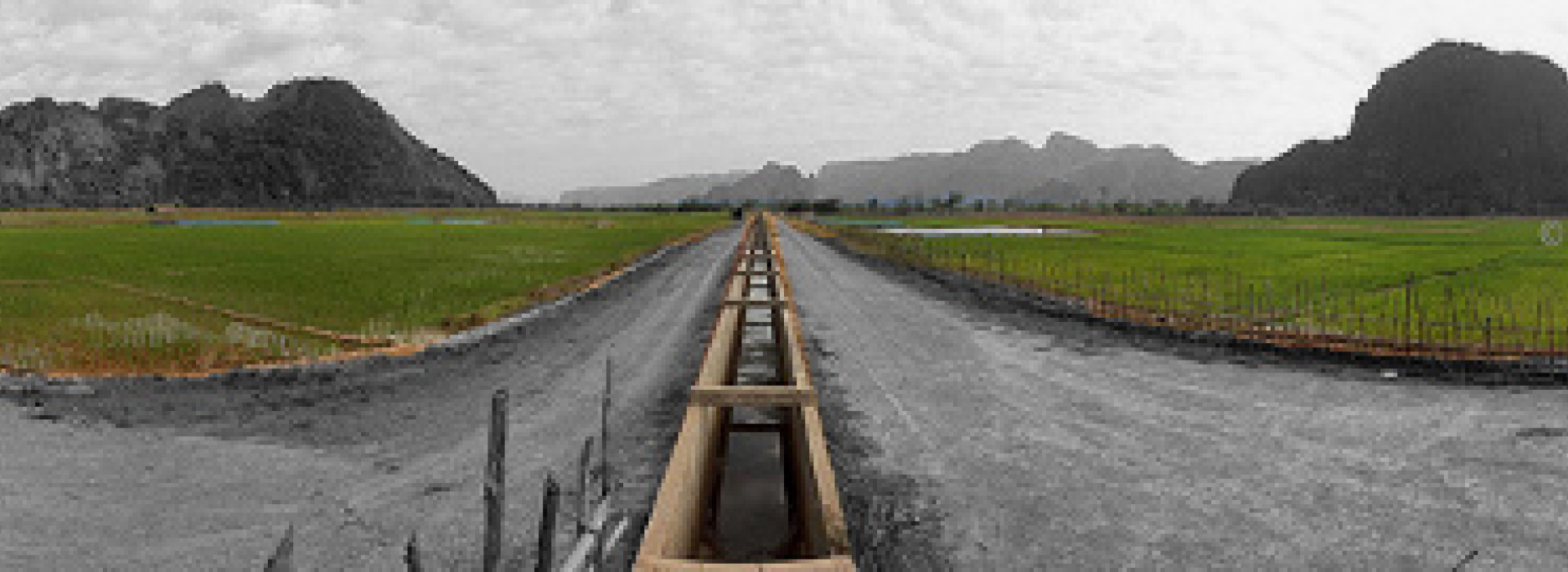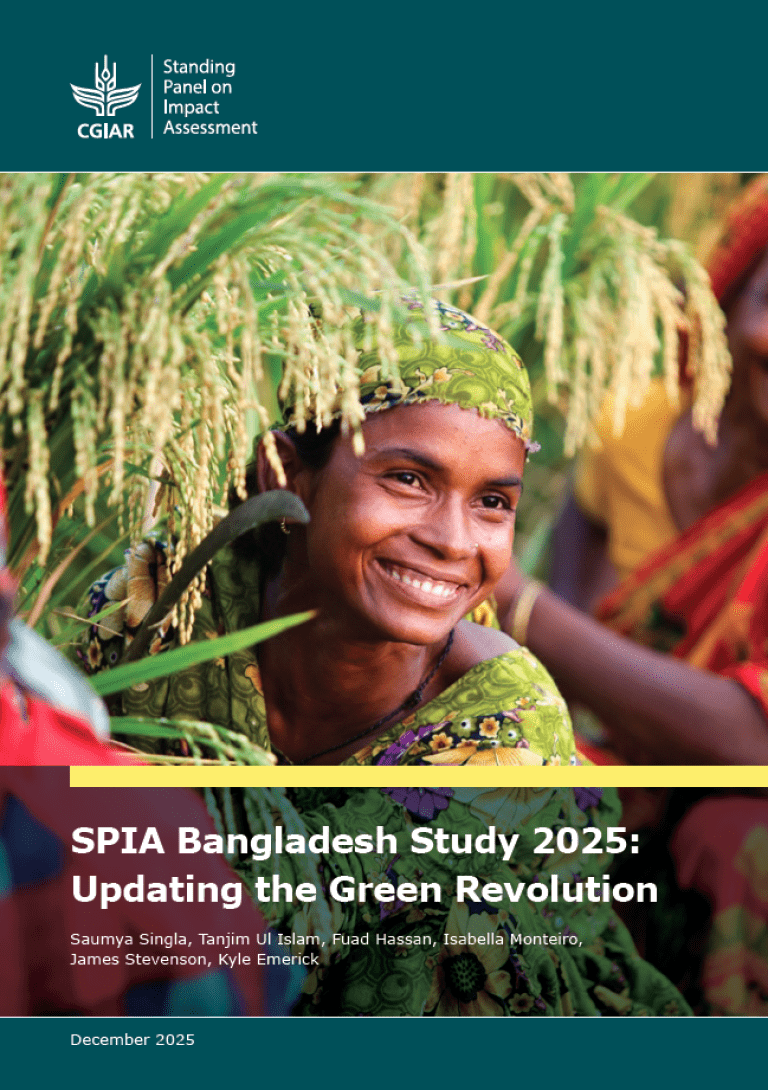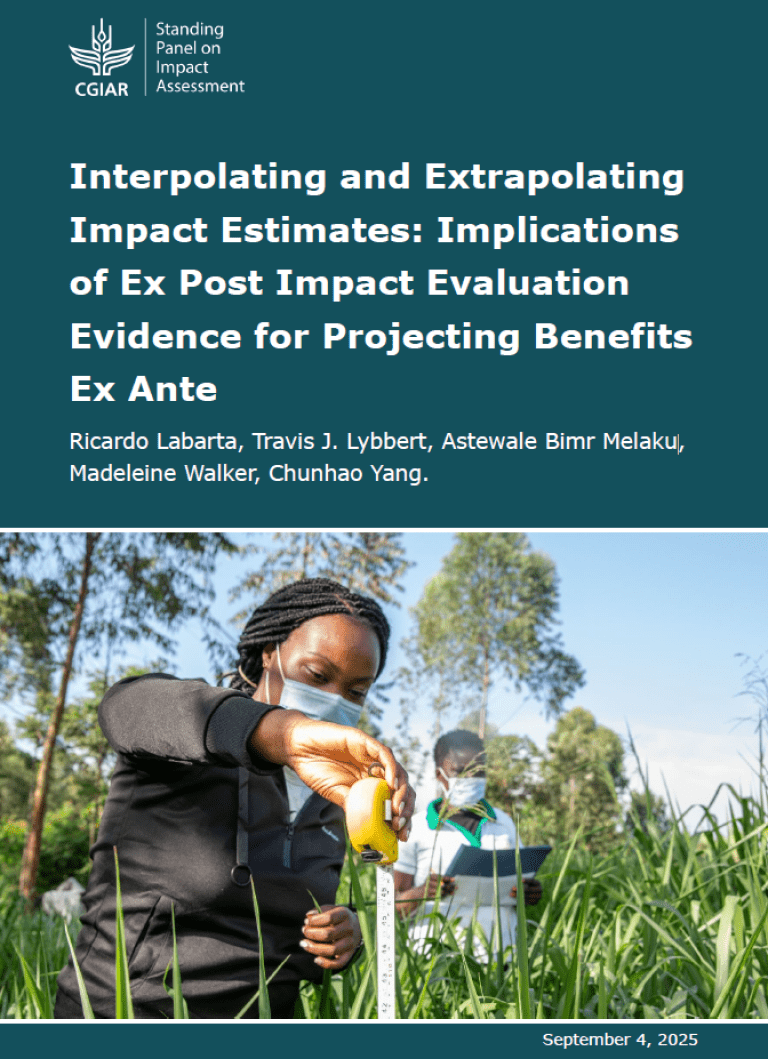This is a major new initiative from SPIA funded by DFID, the Gates Foundation, and ISPC with a budget of approximately US$ 12 million over the period 2013-2016 for a range of activities. The key objectives of SIAC are as below:
- Objective 1 (Methods): Develop, pilot and verify innovate methods for collection and assembly of diffusion data
- Objective 2 (Outcomes): Institutionalize the collection of diffusion data needed to conduct critical CGIAR impact evaluations
- Objective 3 (Impacts): Assess the full range of impacts from CGIAR research
- Objective 4 (Building a community of practice): Support the development of communities of practice for ex post impact assessment within the CGIAR and between the CGIAR and the development community more broadly.
Full proposal and progress reports can be found at the end of this page.
Background
In response to growing donor interest in impact assessment of CGIAR research outputs, the CGIAR Standing Panel on Impact Assessment (SPIA) has developed a set of activities for Strengthening Impact Assessment in the CGIAR (SIAC). These activities come together under a four-year program of work (2013-2016), extended from an initial three-year, organised to meet four specific objectives.
Objective 1: Develop, pilot and verify innovative methods for collection and assembly of diffusion data
Underpinning this objective is the development of a robust set of methods for routinely tracking adoption of CGIAR-related technologies in a cost-effective manner. Such information is a prerequisite for achieving the highest quality assessment of outcomes and impacts. A set of activities will test out innovative ways of assessing the adoption of improved varieties of crops, livestock and fish technologies, agronomic and natural resource management interventions, with the goal of eventually embedding protocols derived on these tests into large-scale surveys carried out by others. Specifically use DNA fingerprinting to establish a benchmark to validate and verify existing adoption data (Activity 1.1); develop protocols for tracking diffusion of NRM technologies (Activity 1.2); new institutional approaches to collecting technology diffusion data (Activity 1.3); and develop and disseminate best practices for collecting diffusion data (Activity 1.4).
Objective 2: Institutionalize the collection of the diffusion data needed to conduct critical CGIAR impact evaluations
The objective here is to compile and make available the best information on outcomes that are at least plausibly attributable to CGIAR research outputs, and on a large-scale. This is where a key bench-marking function for the CRPs is most obviously fulfilled by this program. Large gaps in existing adoption databases for genetic improvement technologies (Activity 2.1), natural resource management technologies (Activity 2.2) and policy-oriented research (Activity 2.3) will be filled for priority regions. In addition, under Activity 2.4, the World Bank Living Standards Measurement Surveys-Integrated Surveys of Agriculture (LSMS-ISA) team and the CRPs will work together with NARS partners and statistical agencies to see how some of these processes can best be integrated into existing surveys to reduce cost and increase frequency of data collection.
Objective 3: Assess the full range of impacts from CGIAR research
While work under Objectives 1 and 2 pave the way for future impact assessment studies, Objective 3 activities are focused on carrying out a number of impact assessments of CGIAR research and development initiatives along the entire chain of causation - from research investments to the System-Level Outcomes. Since this causal chain is long and complex, SPIA will approach it from a number of different perspectives: work to broaden and deepen the evidence base regarding the potential for agriculture research and development to leverage health and nutrition benefits (Activity 3.0); long-term large-scale studies of impact for major areas of CGIAR investment (Activity 3.1); sets of short-term micro-scale impact studies using experimental and quasi experimental methods (Activity 3.2) to provide evidence on the impact of CGIAR research-derived technologies to adopting households; studies of a number of under-evaluated areas of research (e.g. livestock; irrigation management - Activity 3.3); attracting and integrating a strong cadre of pre- and post-doctoral researchers into the impact assessment activities of the CRPs and Centers (Activity 3.4) focusing on specific studies; a system-level meta-analysis of ex post IA of CGIAR research (Activity 3.5).
Objective 4: Support the development of communities of practice for ex post impact assessment
The CGIAR will benefit from a structured attempt to support the existing capacity, and some emerging collaborations, on ex post impact assessment. Information-sharing and regular interaction are important in enabling the kinds of dialogue that can raise standards of impact assessment in the CGIAR, as well as ensuring that individuals have the skills that they need to be successful in their work. Activities towards this objective include a small grants program (Activity 4.1); a targeted program of capacity-building using competitive calls for collaborations with advanced research institutes / universities (Activity 4.2); conferences and workshops on impact assessment in 2014 in 2015 (Activity 4.3); support for independently reviewing and publishing quality ratings of impact assessment studies carried out by CRPs and Centers (Activity 4.4); maintenance and enhancement of this impact website (Activity 4.6).



